- Joined
- Aug 26, 2014
- Messages
- 132
Hello once again folks, I must call upon your wisdom once more.
I just bought this dirty Elgin Turret lathe, and I'm trying to decide how I should get what I need out of it.
(I want this lathe primarily for small scale production. It'll probably get a couple hours use a day.)
When I bought it, it had been sitting outside on a pallet for months. Chip tray was filled with water and surface rust. Hideous thing. The motor box was dry though. The fuse/control box had been unhooked and the power was disconnected, so they didn't plug it in for me to see the engine run. After a very hair-raising trip back home, it's sitting in my downstairs neighbor's garage waiting for my next move.
I am currently trying to decide just what that next move is, and for that (!) I could use your help.
Stats:
A. Before I do any cleaning of the thing, I need to see if the thing runs, so I can either:
If I choose option 1 or 2, and I decide to keep the lathe and not scrap it–
B. I need to get it up two flights of stairs and hook it into my workshop.
I figured that I could simply take it apart and haul/have it hauled upstairs one piece at a time. It won't be pretty, but I think it could be done. At that point…
C. I'll make it look presentable, get some good pictures and make a fun little "restoration" thread out of this.
Questions:
Which option, 1, 2 or 3?
(FYI: I'm willing to spend money on a rotary phase convertor if necessary ($300-400))
Raising the turret up to the correct height (and finding a good way to lock it down) for a lathe I already had would be difficult, but possible.
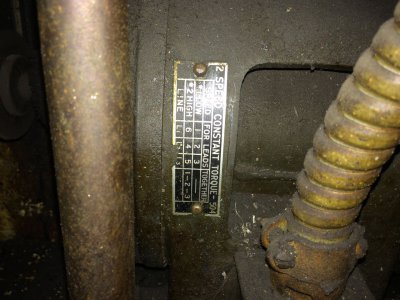
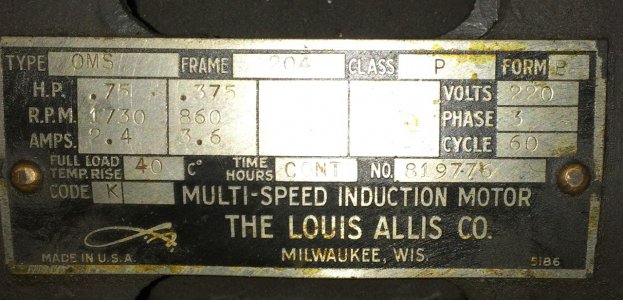
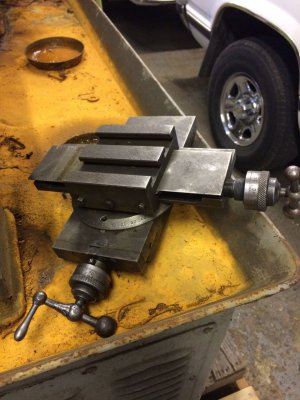
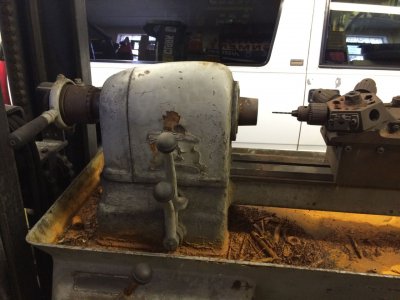
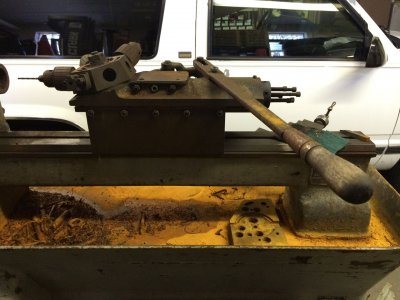
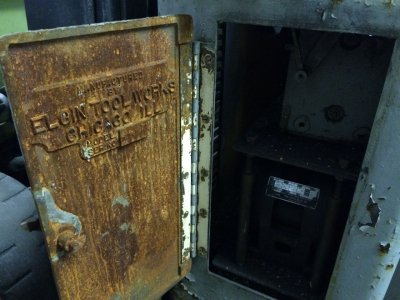
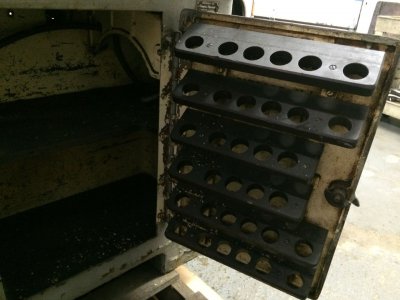
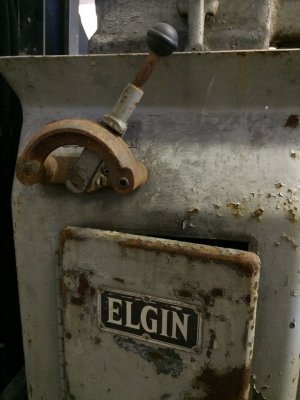
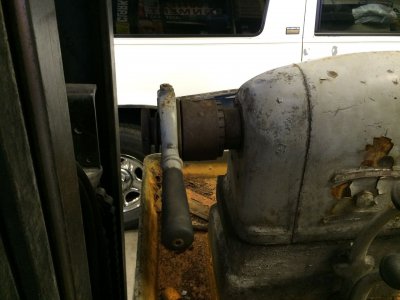
I just bought this dirty Elgin Turret lathe, and I'm trying to decide how I should get what I need out of it.
(I want this lathe primarily for small scale production. It'll probably get a couple hours use a day.)
When I bought it, it had been sitting outside on a pallet for months. Chip tray was filled with water and surface rust. Hideous thing. The motor box was dry though. The fuse/control box had been unhooked and the power was disconnected, so they didn't plug it in for me to see the engine run. After a very hair-raising trip back home, it's sitting in my downstairs neighbor's garage waiting for my next move.
I am currently trying to decide just what that next move is, and for that (!) I could use your help.
Stats:
- Elgin Turret Lathe
- (Can't find a model number anywhere. Where do I look?)
- Motor: 3ph, 3/4 HP, 220V, 1730 RPM, frame: 204, Class P, Form B
- 6 position bed turret
- 5c Collet closer and the spindle turns freely
- Very light surface rust on nearly all surfaces
- I also got a cross slide/compound better condition and does slide
- (I know nothing about electronics and am willing to hire a professional if necessary)
A. Before I do any cleaning of the thing, I need to see if the thing runs, so I can either:
- Buy a phase convertor (Which type??? One fellow at a local machine tool shop told me for a 3/4 HP motor and my use, I could probably get away with a static phase convertor and it would take years to burn up the motor.)
- Replace the motor with a 1ph motor of similar power so you could run it off house current. (? Would it be just as simple as getting a 3/4hp or bigger 110v motor with the right shaft and fitting it into the machine?)
- Just take the turret off, adapt the turret to fit on a lathe I already have, and scrap the rest. (The collet closer might be nice, but I need to get a collet in there and actually check it. It's all got a thin film of rust over everything.)
If I choose option 1 or 2, and I decide to keep the lathe and not scrap it–
B. I need to get it up two flights of stairs and hook it into my workshop.
I figured that I could simply take it apart and haul/have it hauled upstairs one piece at a time. It won't be pretty, but I think it could be done. At that point…
C. I'll make it look presentable, get some good pictures and make a fun little "restoration" thread out of this.
Questions:
Which option, 1, 2 or 3?
(FYI: I'm willing to spend money on a rotary phase convertor if necessary ($300-400))
Raising the turret up to the correct height (and finding a good way to lock it down) for a lathe I already had would be difficult, but possible.










